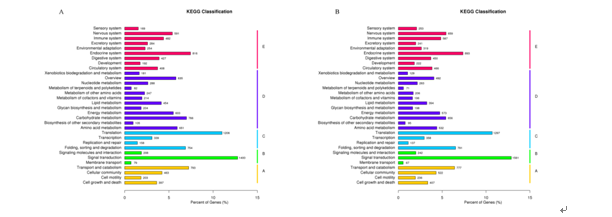作 者:Wang, MH; Jeong, CB; Li, Y; Lee, JS
影响因子:4.129
刊物名称:AQUATIC TOXICOLOGY
出版年份:2017
卷:187 页码: 124-131
Mercury (Hg) pollution is a ubiquitous and serious concern in marine environments, but the response mechanisms of marine animals to Hg pollution (i.e., toxicity/tolerance) are poorly understood. To compare the global responses of two marine copepods (Tigriopus japonicusandPseudodiaptomus annandalei), we analyzed whole transcriptomes using RNA-seq technology in response to Hg treatment (a nominal 10 μg/L HgCl2 in seawater) for 5 h. Hg was strikingly accumulated in both copepods under treatment. The Hg concentration inP. annandaleiwas higher under metal exposure by approximately 1.4-fold compared with treatedT. japonicus.Among transcriptomic data, 101 genes inT. japonicusand 18 genes inP. annandaleiwere differentially regulated in response to Hg exposure. The up-regulated genes inT. japonicuswere concerned with stress, growth, and development, while the down-regulated ones were mainly related to immune response. InP. annandalei, most of the differentially expressed genes were up-regulated, and all were involved in stress response. Our work indicated that Hg exhibits endocrine-disrupting potential at the transcriptomic level in marine copepods. Overall, our study demonstrates the species-specific molecular responses of these two copepods to Hg pollution.

Fig. 13.KEGG classification ofTigriopusjaponicus(A) andPseudodiaptomusannandalei(B).

